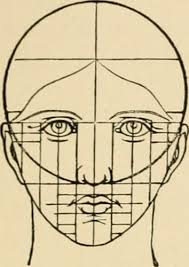Facial attractiveness is highly influenced by the symmetry of its composite parts. It is well known and studied from the scientific analysis of beauty that the more two facial halfs (one half and its mirror image) are, the more attractive one is perceived to be. This is true whether it is of the male or female gender. While one does need to have a face that is perfectly symmetric to be perceived as attractive, the closer the better.

There many causes of facial asymmetry from birth defects, like hemifacial microsomia and hemifacial hyperytrophy, induced by traumatic injuries to one’s natural genetic-driven facial development. It can come in very severe degrees of asymmetry, usually from birth defects, to more milder forms. Almost always facial asymmetry affects more than one part of the face and at multiple tissue levels. (skin down to bone) It is far more common that the asymmetry is caused by underdevelopment or tissue loss than it is from overgrowth or too much tissue.
The various problems in facial asymmetry are numerous and can include such presentations as chin/jawline deviation, vertical facial shortening, cheek flattening, orbital floor/eyeball inferior isplacement, eyebrow lowering, forehead and brow bone protrusion or retrusions and nasal root and tip deviations. Due to the constellation of facial problems and tissue deformities, facial asymmetry surgery (FAS) requires a number of techniques borrowed from the plastic surgery fields of aesthetic, maxillofacial and craniofacial surgery. In many ways, FAS is very similar to facial feminization surgery which also requires a broad knowledge of plastic surgery techniques to achieve an overall facial change.
Facial asymmetry surgery (FAS) can include changes from the top of the skull down to the below the jawline and everything in between. It encompasses the following procedures; skull reshaping/cranioplasty, forehead/brow augmentation/reduction, temporal line augmentation/reduction, browlift, orbital rim reshaping, orbital floor/rim augmentation, eyelid canthal tendon adjustments, cheek augmentation/reduction, rhinoplasty, buccal lipectomies/perioral mound liposuction, soft tissue fat injections, lip land corner of mouth lifts, chin reshaping with osteotomies/ostectomies and implants, jawline/jaw angle reduction and narrowing, jawline implant augmentation, submental and neck liposuction, face and necklifts and ear reshaping.
Treatment planning for FAS requires a physical examination, facial photographs and computer imaging. A 3D CT scan is the radiographic assessment of choice if needed. From these one can determine what exact procedure(s) would be beneficial and which ones provide the greatest degree of facial asymmetry improvement. It is always a good idea in treatment planning to generate a list of the problems in order of importance to the patient. Then the procedures for correction can be chosen and the patient can invest their efforts wisely to get the most change with the minimum number of procedures. In most cases, all selected procedures are done during a single stage operation.
All FAS procedures are done under general anesthesia and certain patients will require an overnite stay in the facility based on the number of facial procedures performed and whether they are traveling alone or with someone. Each FAS procedure has its own unique methods of being performed, many involve bone or implants whole others are done by more traditional aesthetic surgery techniques such as soft tissue suspension or fat removal or injection augmentation. Based on the number of facial procedures done, one should expect a moderate amount of facial swelling and even some bruising. Total resolution of swelling and bruising for public passability is two to three weeks.
Risks and complications from any FAS are based on each individual procedure but remember those risks are additive. The biggest overall issue to understand is that FAS is about lessening the degree of asymmetry and perfect facial symmetry is usually not possible. In many patients, it may take more than one surgery to get the best result possible.
Dr. Barry Eppley
Indianapolis, Indiana


